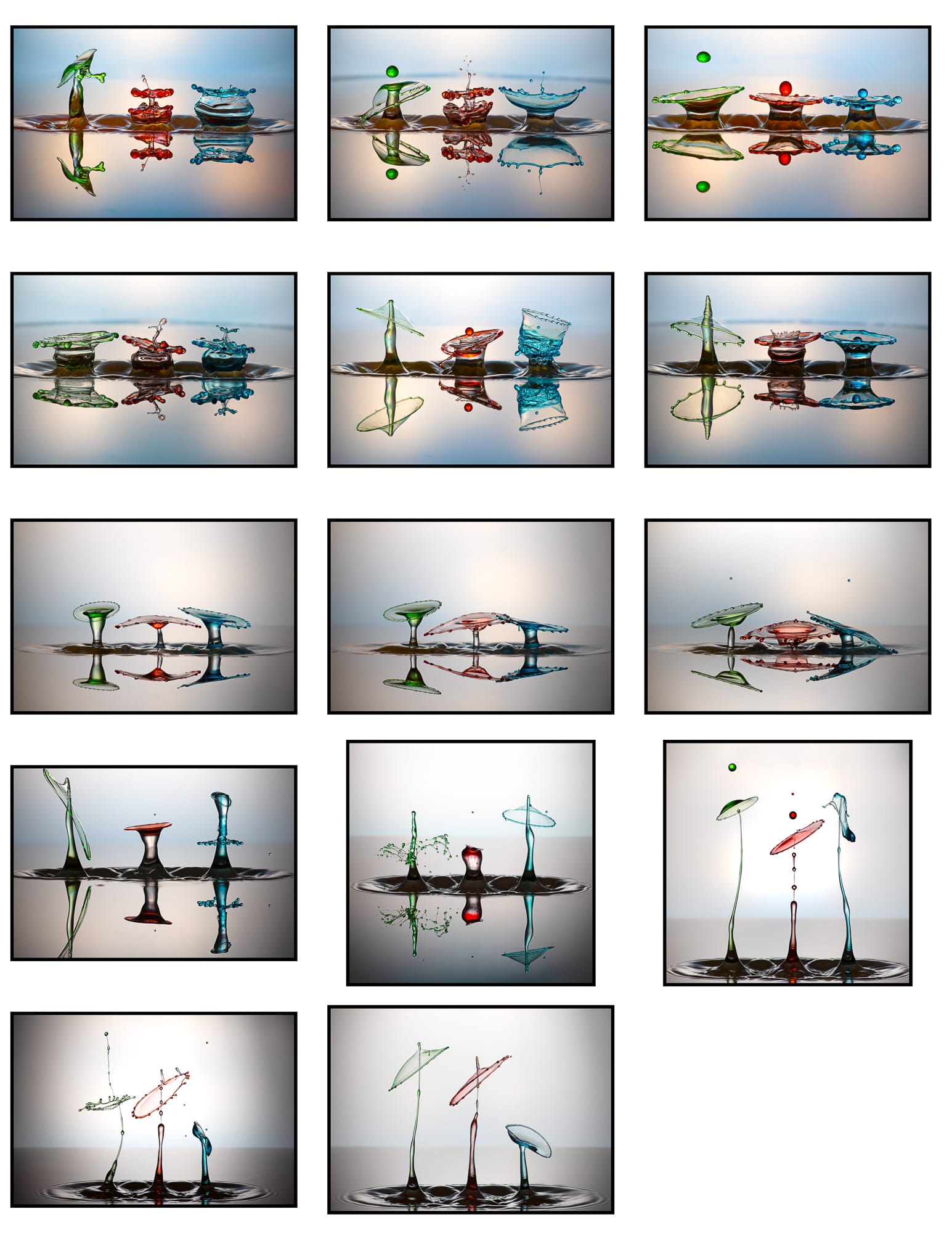The Basic Drop Collision
Whilst creating Crown waterdrop photos is the easiest form of photography, Drop on Drop is really the basic form of waterdrop collisions when all the different liquids are actually in motion. Like all variations within this genre there is numerous factors that can make capturing the image more challenging.
The viscosity of the liquids will affect the shape of the collision.
The timing of the drops can change the shape and height of the rising (Worthington) jet.
The number of drops that hit the jet will of-course change the collision shape. However, if there is only a single solenoid releasing the drops there will be a certain amount of time taken for the solenoid to operate. The actual collision that can be capture only has a few milliseconds where a viable shape can be captured. Factoring the time that the solenoid will take to close/open/create a drop size/close to create a 2nd drop may make it necessary to use different means to make a falling drop. A method used is to make a drop large enough so that it splits into 2 drops falling much closer together than a solenoid could manage. Alternatively, extra solenoids can be used to get separate drops falling with suitable timings.
The liquid that the drop falls into may or may not have a surfactant added. With a surfactant, a falling drop will be repelled by the liquid in the tray and has the potential to create a higher rising jet. Falling drops also have the ability to repel each other so that is another factor that can alter the shape of the collision.
The following collection of photos demonstrate how changes in milliseconds to the timing can result in different shapes. Because there are 3 shapes hitting the water around the same time I expect water turbulence also played a part in the shapes.
